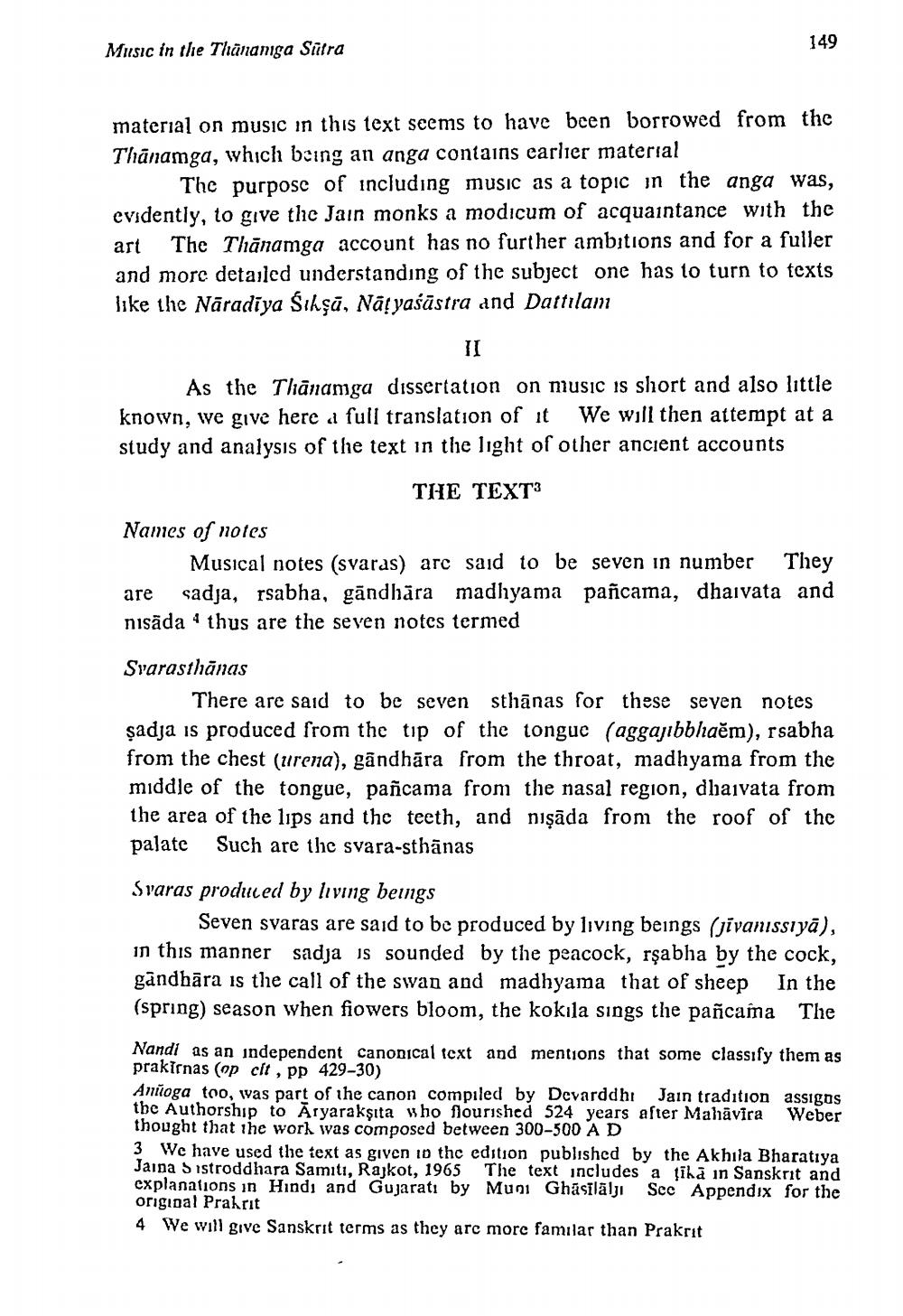________________
149
Music in the Thananiga Sitra
material on music in this text seems to have been borrowed from the Thānamga, which being an anga contains earlier material
The purpose of including music as a topic in the anga was, evidently, to give thc Jain monks a modicum of acquaintance with the art The Thanamga account has no further ambitions and for a fuller and more detailed understanding of the subject one has to turn to texts like the Nāradiya Sikşā, Nāļyaśāstra and Dattılam
II
As the Thānamga dissertation on music is short and also little known, we give here a full translation of it We will then attempt at a study and analysis of the text in the light of other ancient accounts
THE TEXTз Names of notes
Musical notes (svaras) are said to be seven in number They are sadja, rsabha, gāndhāra madhyama pañcama, dhaivata and nisāda " thus are the seven notes termed
Svarasthānas
There are said to be seven sthānas for these seven notes sadja is produced from the tip of the tongue (aggajibbhaěm), rsabha from the chest (urena), gândhāra from the throat, madhyama from the middle of the tongue, pañcama from the nasal region, dhaivata from the area of the lips and the teeth, and nışāda from the roof of the palate Such are the svara-sthānas
Svaras produced by living beings
Seven svaras are said to be produced by living beings (jivanissiyā), in this manner sadja is sounded by the peacock, rşabha by the cock, gandhāra is the call of the swan and madhyama that of sheep In the (spring) season when fiowers bloom, the kokila sings the pañcama The
Nandi as an independent canonical text and mentions that some classify them as prakirnas (op cit, pp 429-30) Anoga too, was part of the canon compiled by Devarddhi Jain tradition assigas the Authorship to Aryarakşıta who flourished 524 years after Mahavira Weber thought that the work was composed between 300-500 A D 3 We have used the text as given in the edition published by the Akhila Bharatiya Jaina Sistroddhara Samiti, Rajkot, 1965 The text includes a țiha in Sanskrit and explanations in Hindi and Gujarati by Mugi Ghāsīlālji Scc Appendix for the original Prakrit 4 We will give Sanskrit terms as they are more familar than Prakrit




